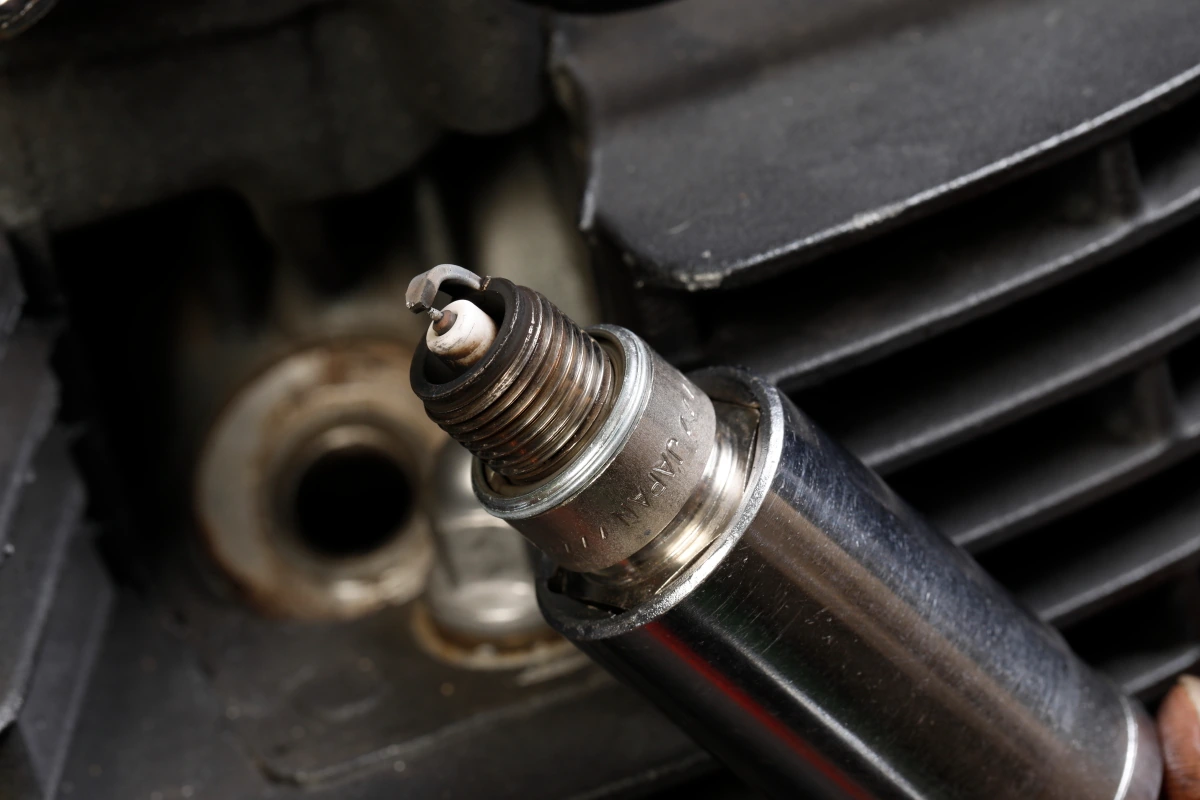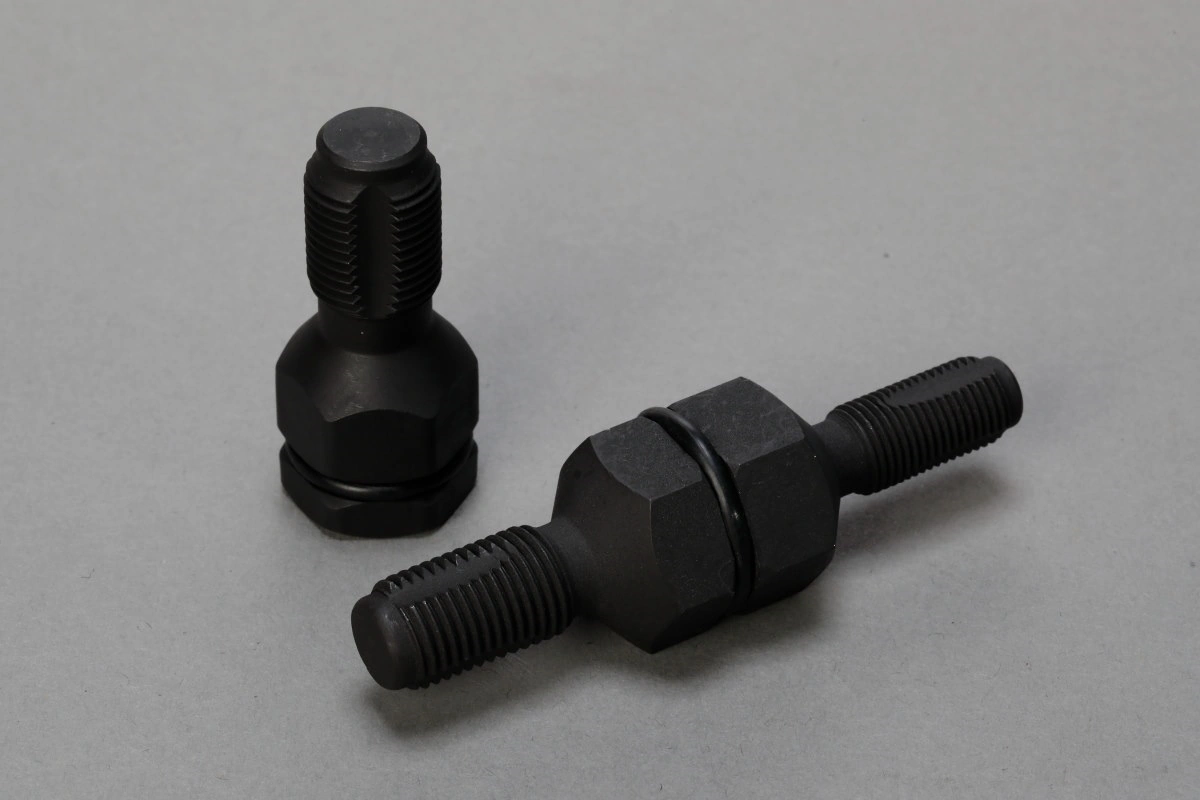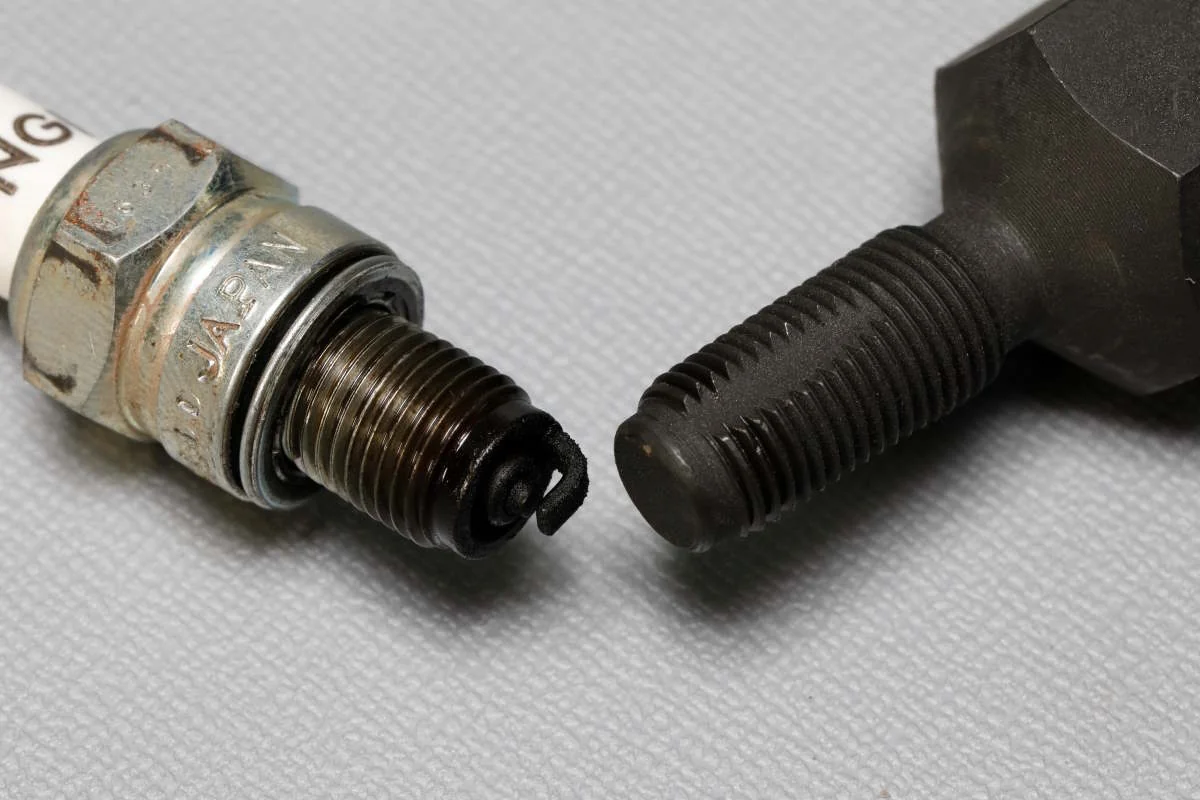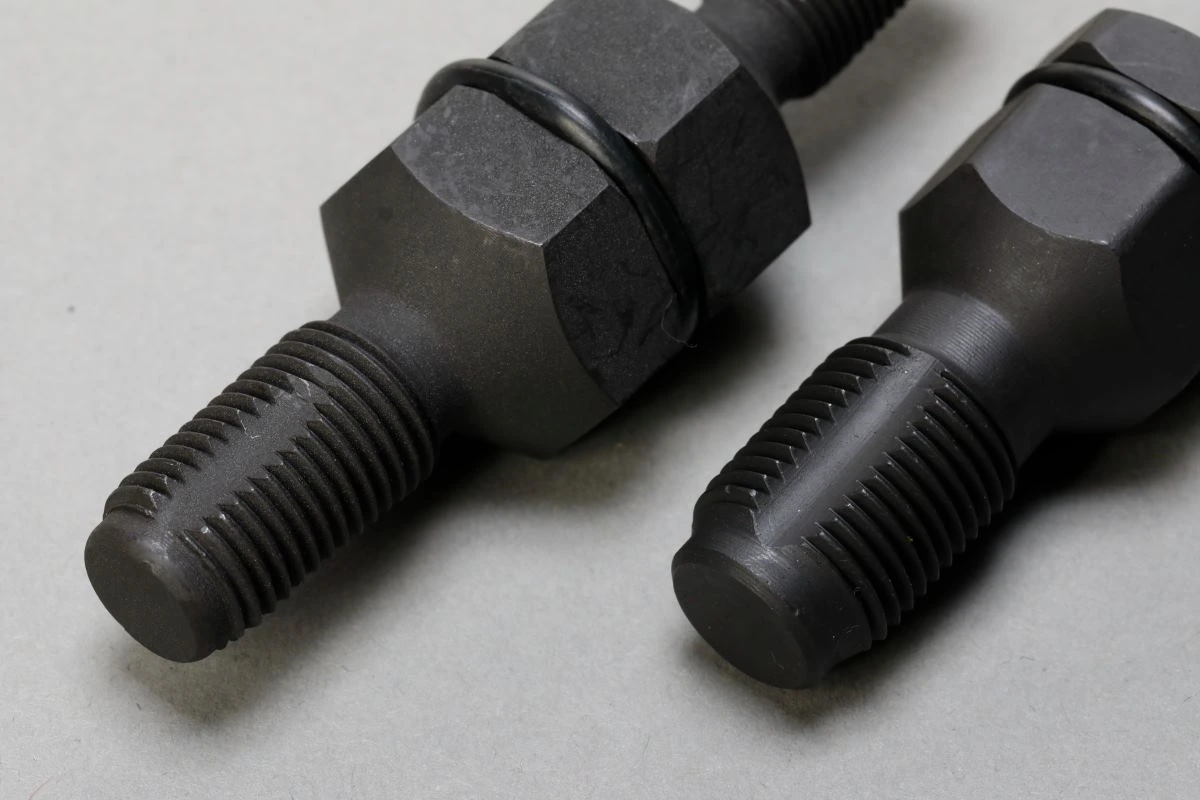The spark plug installed in the cylinder head is an important part of igniting the air mixture in the combustion chamber and needs to be replaced periodically depending on the mileage.
Installation is done with a wrench as with ordinary screws and bolts, but if the plug is screwed in at an angle or if a foreign object is left in the screw groove, it may be gnawed off.
In such cases, a specially modified tap for spark plugs is useful.
- Careless attempts to replace spark plugs can be painful.
- If the threaded groove is crushed, the engine is finished!
- Spark plug correction tap set to match the plug thread size
Careless attempts to replace spark plugs can be painful.


For carburetor motorcycles, it is a barometer of the spark plug’s burnt condition and the state of the mixture ratio.
Therefore, it is important to take the plugs on and off carefully and not underestimate the importance of this simple task, even when it is not time to replace them according to mileage.
Spark plugs are an important barometer to determine the combustion state and condition of the engine. In the carburetor era, however, the mixture varied greatly depending on the combination of jets and needles, so the burnt or smoldering condition of the electrodes was an important clue to knowing whether the engine setting was good or bad. When attaching and detaching the spark plug attached to the cylinder head with a plug wrench, the work itself is not that difficult, although some models require the removal of the cowl and fuel tank. However, if the work is done carelessly because it is easy, there is a risk of encountering unexpected trouble. The most dangerous risk is damage to the screw grooves. If we replace them with common screws, a spark plug is a bolt and a cylinder head is a nut.
In the case of a bolt-nut relationship, if the bolt is made of steel, then the nut is also made of steel, and the materials used for both are basically the same. However, in the case of a spark plug and cylinder head, the threaded part is an alloy made of iron and carbon, while the cylinder head is made of aluminum, so the hardness of the materials is very different. Therefore, even if the spark plug is slightly tilted against the female threads of the cylinder head, the first few threads may still be inserted. This is especially important when the plug is so deep in the cylinder that it cannot be turned by pinching it with the fingers and you begin installation with a plug socket + ratchet handle combination from the beginning. Compared to turning the plug and socket directly, using a ratchet handle tends to require more torque, and you may not even notice that the plug is about to be tilted and nipped.
Plug manufacturers explain that the first few mountains should always be installed by hand turning, but sparing the time and effort in a familiar operation can have serious consequences.
If the threaded groove is crushed, the engine is finished!
Since the female threads of the cylinder head are made of softer material than the male threads of the spark plugs, most of the damage to the thread grooves occurs on the cylinder head side.
The explosive combustion of the gas mixture inside the cylinder generates intense pressure of as much as 5 MPa, and this pressure is also applied to the spark plug. The worst thing you can do is to force the plugin at an angle, or to bite into foreign matter adhering to the threads of the cylinder head, and when the female threads of the head are almost gnawed off, think that “just tightening the plug will do something” and go ahead with the work. If the thread groove in the cylinder head is crushed, it can cause insufficient tightening torque for the spark plug, resulting in compression leaks. If the symptoms progress further, the compression pressure can damage the female threads and blow out the spark plugs while the engine is operating.
In such cases, it may be possible to repair the cylinder head using a female thread repair item such as a recoil, but as a general rule, work on the cylinder head alone. In that case, the engine would need to be disassembled, which would be a huge hassle and cost.
In some cases, you may have to give up on the engine itself. If your engine has a deep plug hole, when you remove the plug, foreign matter that has accumulated at the bottom of the hole may fall and get caught in the thread groove.
To avoid this, it is effective to blow air into the plug hole to blow out any dirt or foreign objects before removing the plug. After removing the plug cap, insert the air blow gun and give it a shoo! There is a good reason for blowing. To avoid such troubles, turn the plug carefully on the first few threads, and if it doesn’t go in smoothly or feels like it has a crunchy feeling that foreign objects are caught, don’t hesitate to pull it out and check the condition of the thread groove. Let’s check.
Spark plug correction tap set to match the plug thread size


A plug-hole correction tap is set to match the thread size of the spark plug. Since this is not a tool for cutting a new female thread, the diameter remains the same from the tip to the base, and there is a groove to collect the chips cut during the correction.


To ensure that the original size plug can be used after the modification, the modification tap should match the plug size.
In the case of NGK, the thread diameter of 10 mm is a C plug.


The two plug-hole correction taps, M10 & M12 and M14, shown here are both used with a plug socket of 21 mm on the opposite side.
Therefore, depending on the size of the plug hole in the cylinder head, the plug socket may interfere with the plug socket, so check before purchasing.
If there is any discomfort when installing a spark plug, the best course of action is to correct it without forcibly screwing it in. The “plug-hole correction tap” exists as a tool for this purpose.
Just as a tap and die set can correct damage to the engine or motorcycle body threads, a plug hole correction tap can correct the threads of cylinder head plugs and remove foreign objects.
Structurally, they are more dimensional than hand taps that make female threads in the material and feature a groove section where chips and foreign matter can be collected.
The size is set to match the spark plug threads, and the compatible tap size is selected by checking the thread dimensions of the spark plug installed. In the case of NGK plugs, the screw diameter of the C plug is φ10 mm, the D plug is φ12 mm, and the B plug is φ14 mm, and there is a tap that corresponds to each screw size. It is important to note that even if the thread size is the same, the hexagonal opposite side dimensions that the plug wrench hangs on may be different. The spark plug correction tap introduced here is the type with a hexagonal part to be turned with a plug socket, but depending on the size of the plug hole in the cylinder head, the hexagonal part may interfere.
In the case of the product shown here with M10 and M12 taps at both ends, the center hexagonal part has a diagonal of 21 mm, and a socket for a B plug is used.
However, the general opposing side of an M12 D plug is 16 mm (there are also 14 mm and 18 mm opposing sides), so a socket for a B plug may not fit into the plug hole. This may not be a problem for air-cooled engines with room around the plug-hole, old cars, or out-of-print cars, but for water-cooled engines with a compact head design, it is necessary to check the tap and socket size as well.